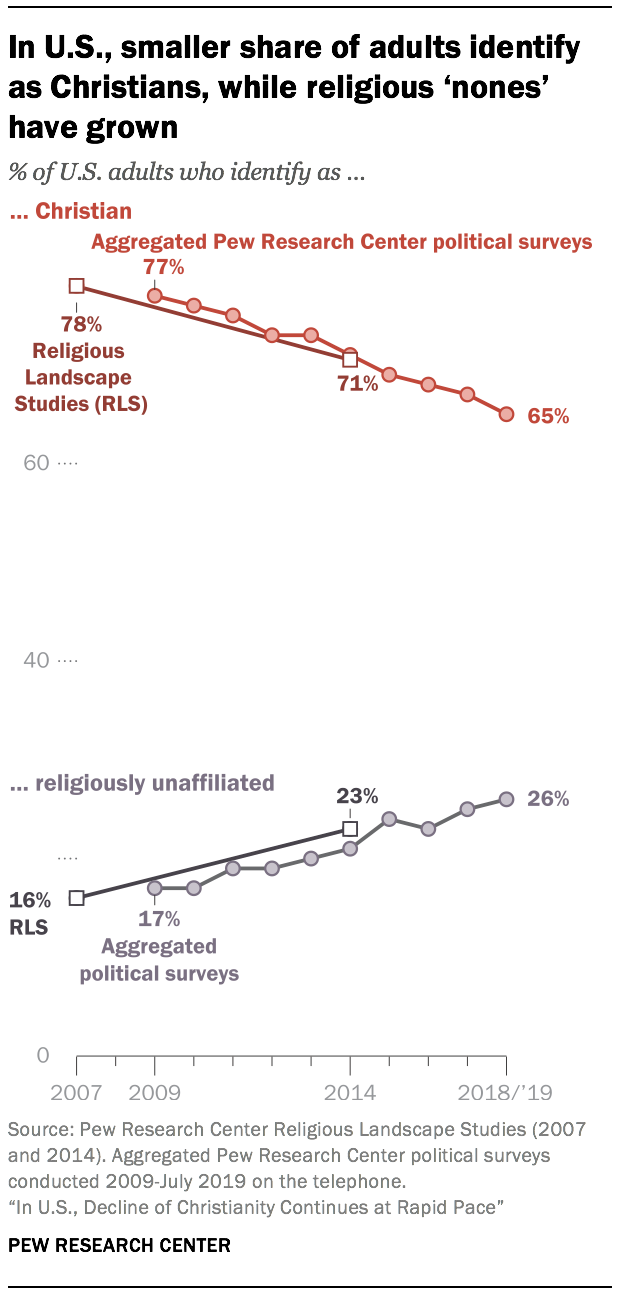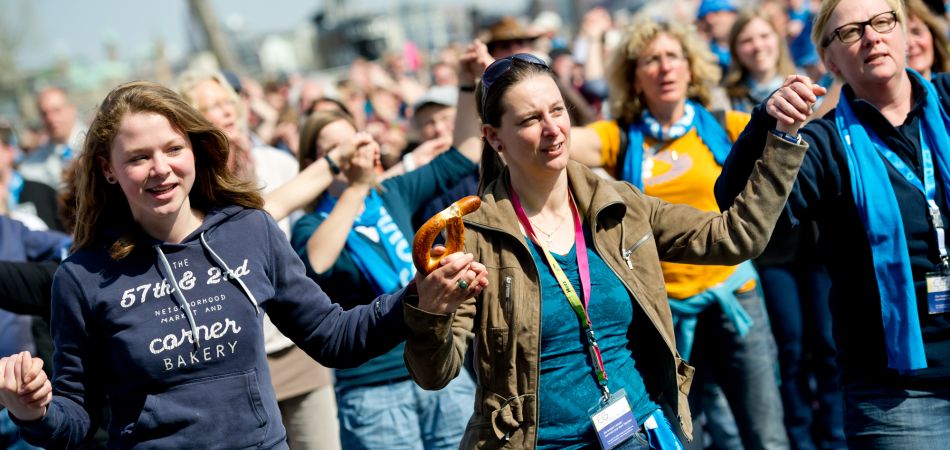In U.S., Decline of Christianity Continues at Rapid Pace
An update on America's changing religious landscape
(Sungjin Ahn photography/Getty Images)

The religious landscape of the United States continues to change at a rapid clip. In Pew Research Center telephone surveys conducted in 2018 and 2019, 65% of American adults describe themselves as Christians when asked about their religion, down 12 percentage points over the past decade. Meanwhile, the religiously unaffiliated share of the population, consisting of people who describe their religious identity as atheist, agnostic or “nothing in particular,” now stands at 26%, up from 17% in 2009.
Both Protestantism and Catholicism are experiencing losses of population share. Currently, 43% of U.S. adults identify with Protestantism, down from 51% in 2009. And one-in-five adults (20%) are Catholic, down from 23% in 2009. Meanwhile, all subsets of the religiously unaffiliated population – a group also known as religious “nones” – have seen their numbers swell. Self-described atheists now account for 4% of U.S. adults, up modestly but significantly from 2% in 2009; agnostics make up 5% of U.S. adults, up from 3% a decade ago; and 17% of Americans now describe their religion as “nothing in particular,” up from 12% in 2009. Members of non-Christian religions also have grown modestly as a share of the adult population.
SEARCH
LET US EXPLAIN
Faith and peace
Religion in Germany and the “Religions for Peace” World Assembly. We present the facts.
Sarah Kanning / 15.08.2019
“Religions for Peace” will be meeting in Lindau in 2019dpa
Religions in Germany
84 percent of the world’s population belong to a religion – a percentage that is rising all the time. The opposite trend can be observed in Germany, however, where fewer and fewer people feel tied to a religion. In a survey, almost 80 percent of
young people said that they could live without a religious faith.
While one in two people in Germany still belonged to one of the two major Christian churches in 2017, this number will fall to just one in three by 2060, according to a study carried out by the University of Freiburg. Around 36 percent of the population are already unaffiliated with any religion.
More than 1.2 million Muslims have made a new home for themselves in Germany since 2011. Consequently, between 4.4 and 4.7 million Muslims now live in Germany. That is around 5.4 to 5.7 percent of Germany’s total population of 82.2 million people.
After the Shoah, only around 15,000 Jews were still living in Germany. Today, more than 100 Jewish communities have some 107,000 members.




